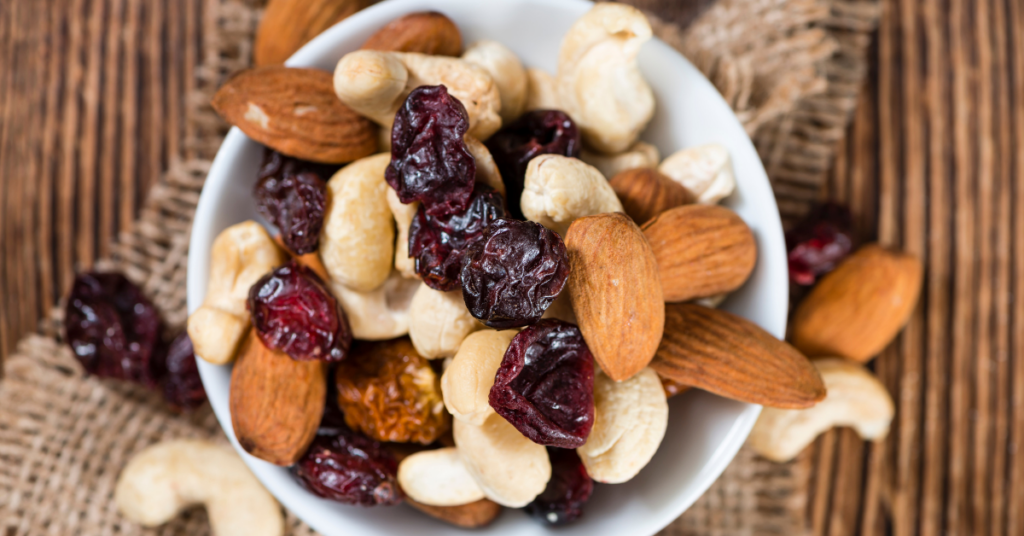If you’ve ever tried to improve your own health and wellbeing, whether to build muscle, recover faster, lose fat, or simply feel better, you’ve probably been told to focus on high-quality protein.
So you do your research. You find products labeled with scientific-sounding claims like high bioavailability, complete amino acid profile, or PDCAAS score of 1.0. It all sounds great, clinical, credible, and hard to argue with.
But here’s the thing:
Many so-called “high-quality” proteins don’t actually work the way you think they do.
They may be absorbed well. They may have lots of grams on the label. But that doesn’t mean your body can use them efficiently.
Welcome to the blind spot in protein science.
When it comes to protein, most people still think in grams.
“How much am I getting?”
But as nutrition science evolves, we’ve learned that what you absorb, and even more importantly, what your body can actually use, matters far more than what’s printed on the label.
What Is Bioavailability?
Bioavailability is a term used to describe how much of a nutrient, in this case, protein, actually enters your bloodstream after digestion. It’s a critical first step in nutrition science, because if you can’t absorb something, you definitely can’t use it.
Two primary metrics dominate the bioavailability conversation in protein science:
- PDCAAS (Protein Digestibility Corrected Amino Acid Score)
- DIAAS (Digestible Indispensable Amino Acid Score)
These are used to measure how much of the protein you eat actually makes it into your bloodstream, or in other words much of the protein you eat makes it into your bloodstream.
Sounds important, right? It is. But it’s not the whole story.
Because getting protein into your body is only half the equation. The real question is:
Can your body actually use it to build muscle, repair tissue, and support health?
A System Built for Survival, Not Performance
Here’s something almost no one tells you:
PDCAAS wasn’t built for athletes. It was developed to address malnutrition in children aged 2 to 5, specifically in developing countries, as part of a global public health effort 50 years ago.
Its goal wasn’t to measure “good” protein for muscle-building. It was to identify the minimum viable nutrition for children at risk of starvation.
Over time, this well-meaning system has been distorted into something it was never meant to be: a gold standard for protein quality. Which it’s not.
False Sense of Assurance
Walk into any supplement store and you’ll hear the same claims:
- “High-quality protein!”
- “Complete amino acids!”
- “Fast absorption!”
But here’s the truth:
Just because a protein is well-absorbed doesn’t mean your body can use it effectively.
In fact, many so-called “high-quality” proteins are poorly balanced, and end up doing far less for your body than they claim.
The assumption that high absorption = high utility is deeply flawed. And most companies lean on that assumption to mislead consumers and maximize profits.
It’s also a big reason people experience bloating, fatigue, or weight gain despite taking protein supplements religiously.
The problem? Bioavailability tells you how much protein gets into your bloodstream.
It does not tell you how well your body can use it to build and repair muscle.
How Bioavailability Is Measured
Let’s briefly break down the two leading systems.
- PDCAAS evaluates a protein based on how digestible it is and whether it contains enough of each essential amino acid. But it caps all values at 1.0, meaning a protein could technically be “better” than 1.0, but we wouldn’t see it.
- DIAAS is a newer and more accurate method. It evaluates digestibility for each amino acid individually, offering more insight into how usable a protein really is. DIAAS doesn’t truncate scores, which is a major improvement.
Still, both of these only measure what gets in. They say nothing about how well that protein is actually used.
That’s where most protein science stops, and where the problems begin.
Absorption ≠ Usefulness
For decades, we’ve been taught that absorption = quality.
Whey protein, for example, is often labeled the “gold standard” of protein because it scores high on PDCAAS (1.0) and DIAAS (1.14). These numbers reflect bioavailability, how much of the protein is digested and absorbed.
But here’s the problem:
“You can absorb something perfectly …and still not be able to use it fully”
Just because a protein is absorbed doesn’t mean your body can use it effectively.
After digestion and absorption, protein enters your bloodstream as amino acids, the building blocks of everything from enzymes and hormones to muscle tissue.
But unless those amino acids are available in the right proportions, your body can’t use them to build muscle. Your muscles require all nine essential amino acids (EAAs), in precise ratios, to synthesize new tissue. If even one amino acid is too low, the process halts completely.
This concept is known as the limiting amino acid effect: if just one amino acid is missing or too low, the body stops the entire building process. Your body doesn’t “partial-build” muscle. Construction comes to a halt.
That’s the case with whey. It’s highly bioavailable, but imbalanced in the essential amino acids (EAAs) your muscles need to rebuild. As a result, your body absorbs it… but only uses about 48.5% of it for actual muscle building.
What happens to the rest?
- It’s converted to energy
- If that energy isn’t burned? It’s stored as fat
- And it creates nitrogen waste, which stresses your kidneys over time
This is the dark side of protein marketing: the assumption that “more absorbed = better”, when in reality, it’s about what gets used.
Why We Need to Rethink What Protein Quality Really Means
Let’s make a distinction:
- Bioavailability tells you how much protein gets into your bloodstream.
- But it says nothing about how well your body can use it.
Imagine 100 boxes delivered to a construction site. Sounds great, until you realize you have too much of some materials and too little of others. You can build some of the building, but not the whole thing. It’s limited item you have the least amount of. The rest is wasted and lost.
That’s what happens when a protein is absorbed but poorly matched. The shipment arrives, but the job can’t be fully completed.
Same goes for your muscles.
Introducing Match Rate™
What Your Muscles Actually Need
Match Rate™ is a new, science-backed metric that measures how closely a protein’s amino acid profile matches the amino acid profile of human muscle tissue, the very thing you’re trying to build and repair.
It’s a simple but powerful idea:
The better the match, the more your body can use, with less waste.
This is the missing link in protein quality.
Bioavailability asks: “Did the amino acids arrive?”
Match Rate™ asks: “Can your body actually build with it?”
Match Rate™ vs. Bioavailability, A Side-by-Side
| Metric | Measures | Focuses On | % Utilized | Real-World Outcome |
| Bioavailability | Digestion + absorption | Getting protein into the body | Varies | Whey: absorbed well, but poorly used |
| Match Rate™ | Amino acid alignment with muscle | Using protein effectively | Up to 96.2% | NutriMatch: nearly all usable |
Bioavailability measures how much protein gets through the door.
Match Rate measures how much gets put to work.
Why Match Rate™ Matters More
When it comes to building muscle, repairing tissue, and avoiding fat gain or kidney strain, Match Rate™ is the metric that matters most.
- A high Match Rate™ means nearly every gram of protein you eat gets used effectively.
- That translates to better results with fewer calories.
- There’s less metabolic waste, which means your kidneys don’t work as hard.
- And because there’s less leftover energy, there’s less fat storage from unused aminos.
If you’ve ever wondered why some proteins seem to “work better”, even if the label shows fewer grams, this is why.
Here’s the key difference:
- Bioavailability measures digestion. It answers: “Did it get into your system?”
- Match Rate measures biological utility. It answers: “Can your muscles actually use it to build and repair?”
Real-World Protein Comparison, After Adding Match Rate™
Now let’s add Match Rate™ to the picture, and everything changes:
| Protein Source | Match Rate™ | Bioavailability (PDCAAS/DIAAS) | Notes |
| Whey Isolate | 48.5% | 1.00 / 1.14 | Absorbed well, >50% wasted |
| Milk (Whole) | ~70–75% | 1.00 / 1.05 | Stronger match than whey |
| Chicken (White) | 81.4% | ~0.95 | Balanced, highly effective |
| Pea Protein | 54.2% | ~0.70–0.89 | Whole plants penalized unfairly |
| NutriMatch™ | 96.2% | ~0.95–1.00 | Precision-aligned for maximum use |
Match Rate™ makes the inefficiencies of traditional protein options visible, and gives you a clear advantage when choosing what’s best for your body.
Why is Whey More Bioavailable?
Whey has a high bioavailability score because whey is a refined isolate, not a whole food. It’s a filtered byproduct of dairy, stripped of everything except the protein.
Of course it digests quickly. It’s essentially been pre-digested for you.
So yes, it absorbs quickly.
But the Match Rate™ of whey is only 48.48%. Meaning more than half of it is wasted, and most likely stored as fat instead of repairing and packing on muscle.
Meanwhile, most plants are measured in their whole, unprocessed forms, which naturally score lower on digestibility, even though they’re not stripped down like whey.
But here’s the kicker:
When plant proteins are properly processed, blended, and optimized, they can rival or outperform whey, on both bioavailability and Match Rate™.
That’s the power of NutriMatch™.
Smarter protein, better efficiency, and better outcomes.
So What Should You Look for in a Protein?
Here’s the takeaway:
Don’t just ask how many grams are on the label.
Ask this instead:
- How closely does it match my body’s amino acid needs?
- How much will my body actually use?
Because at the end of the day, that’s what matters, not what goes in, but what gets built.
Why NutriMatch™ Was Built to Solve This
- It combines plant-based isolates in algorithmic ratios to match the amino acid profile of human muscle.
- It delivers a 96.2% Match Rate™, higher than any animal or plant source.
- It’s designed to be absorbed efficiently, with none of the downsides of dairy or heavily processed proteins.
- It supports better muscle growth, fat loss, and overall body composition, with minimal waste.
Conclusion: Upgrade the Way You Think About Protein
For years, we’ve judged protein by what it contains, or how well it absorbs. But that’s not enough.
Your body deserves a smarter metric.
Match Rate™ shifts the conversation from hype to utility. From grams to outcomes. From protein on paper… to protein that works.
If you want better performance, better recovery, and better health, choose the protein built for real results.
NutriMatch™. Protein quality, perfected.



